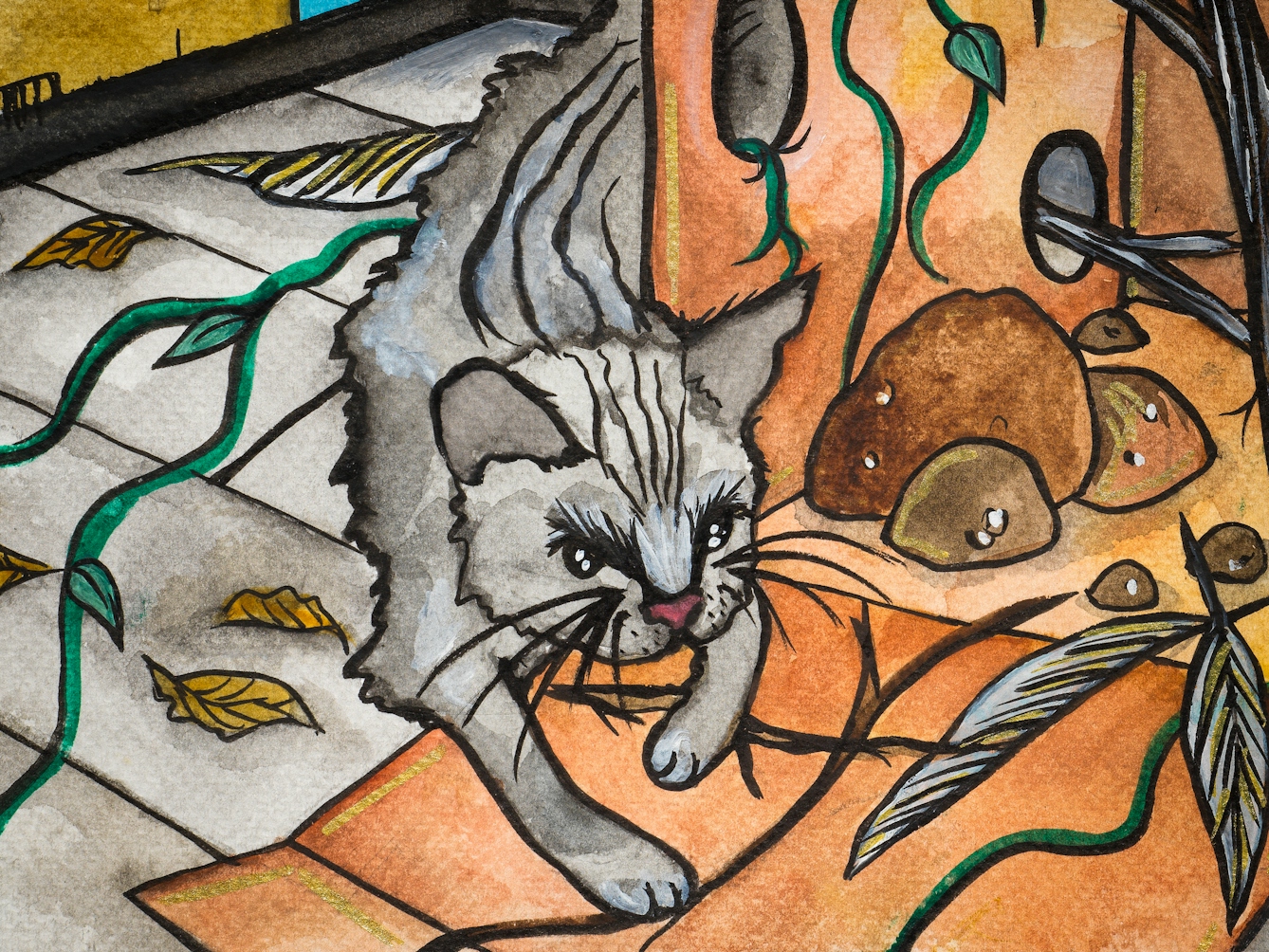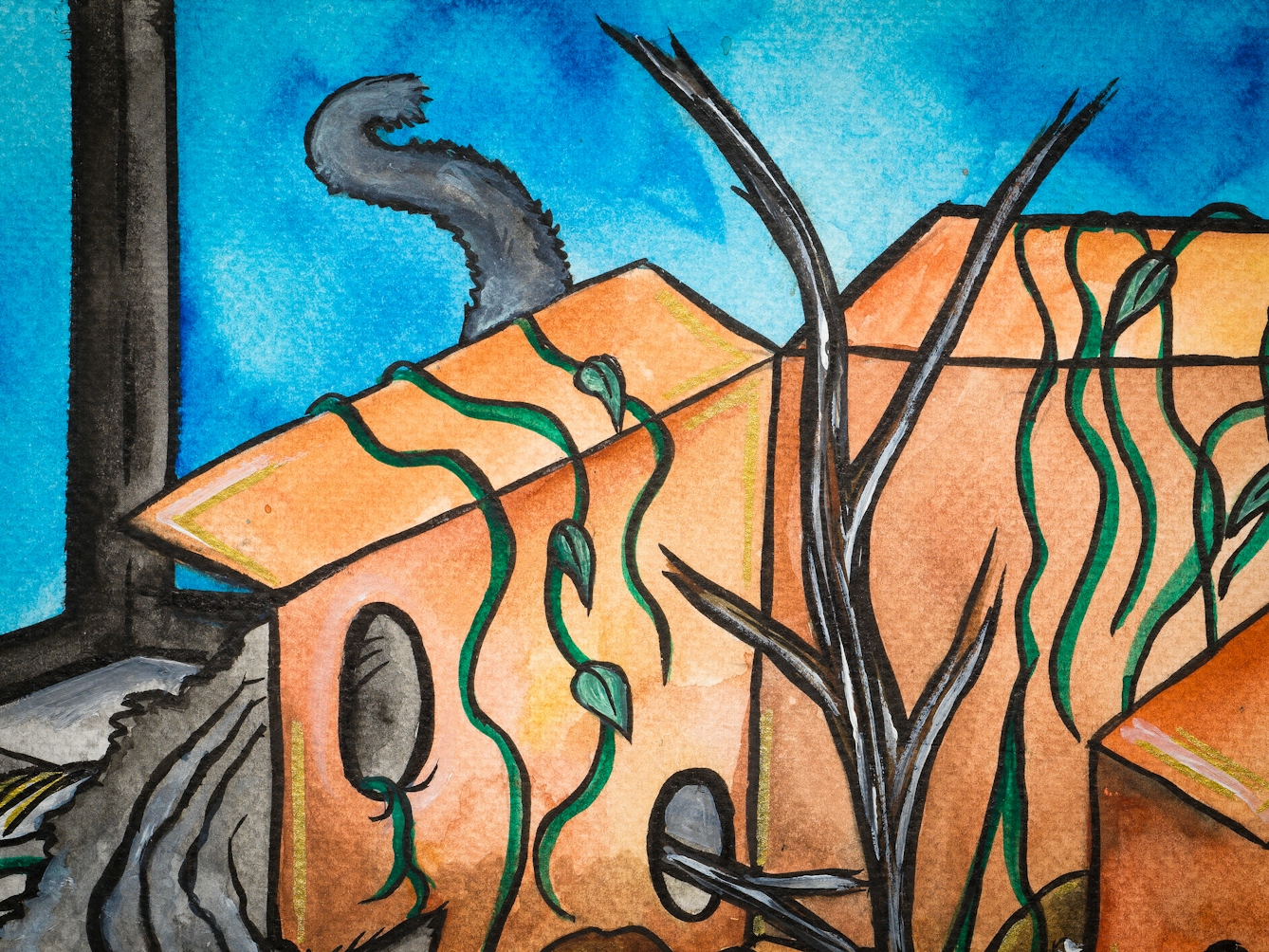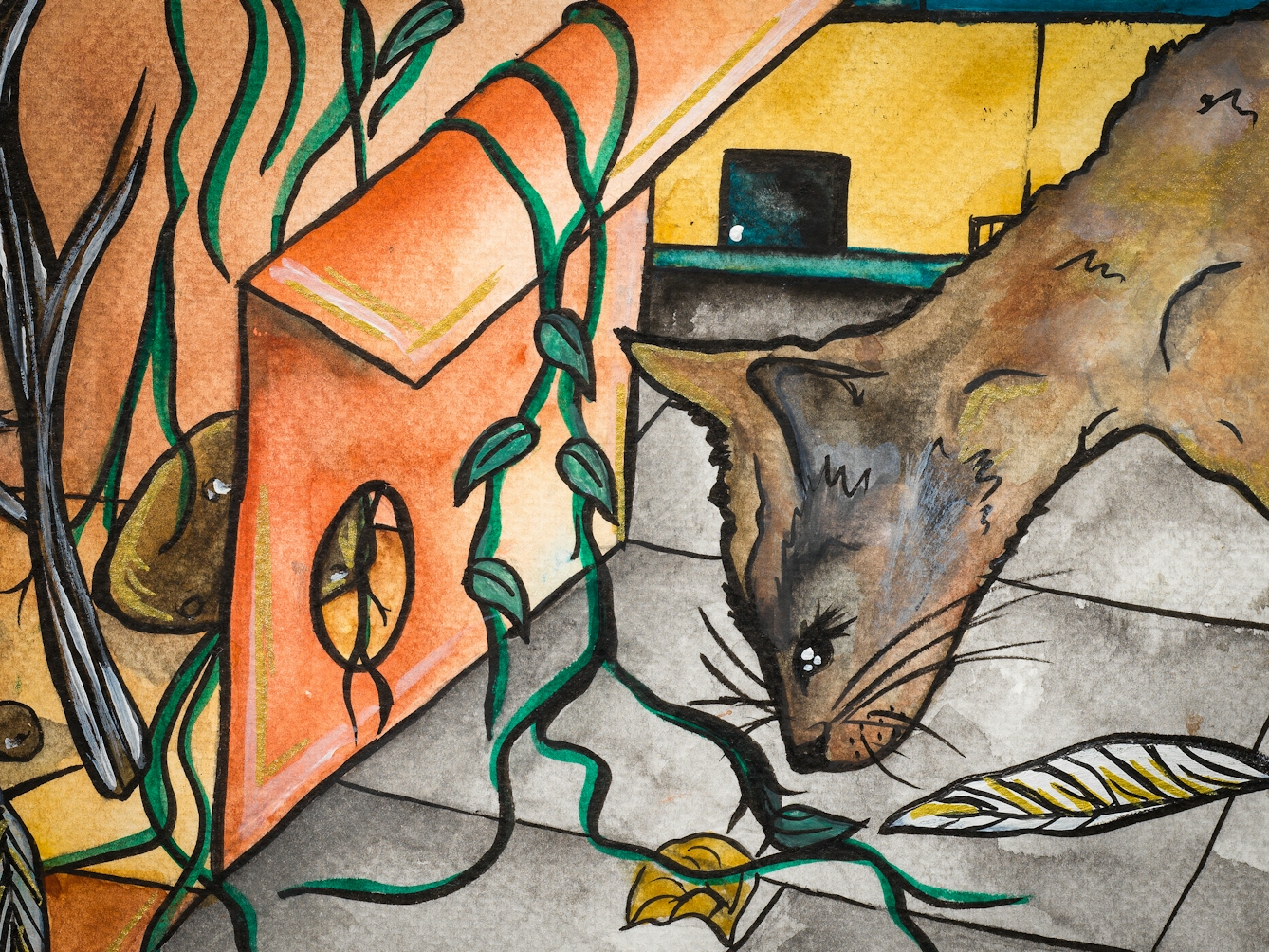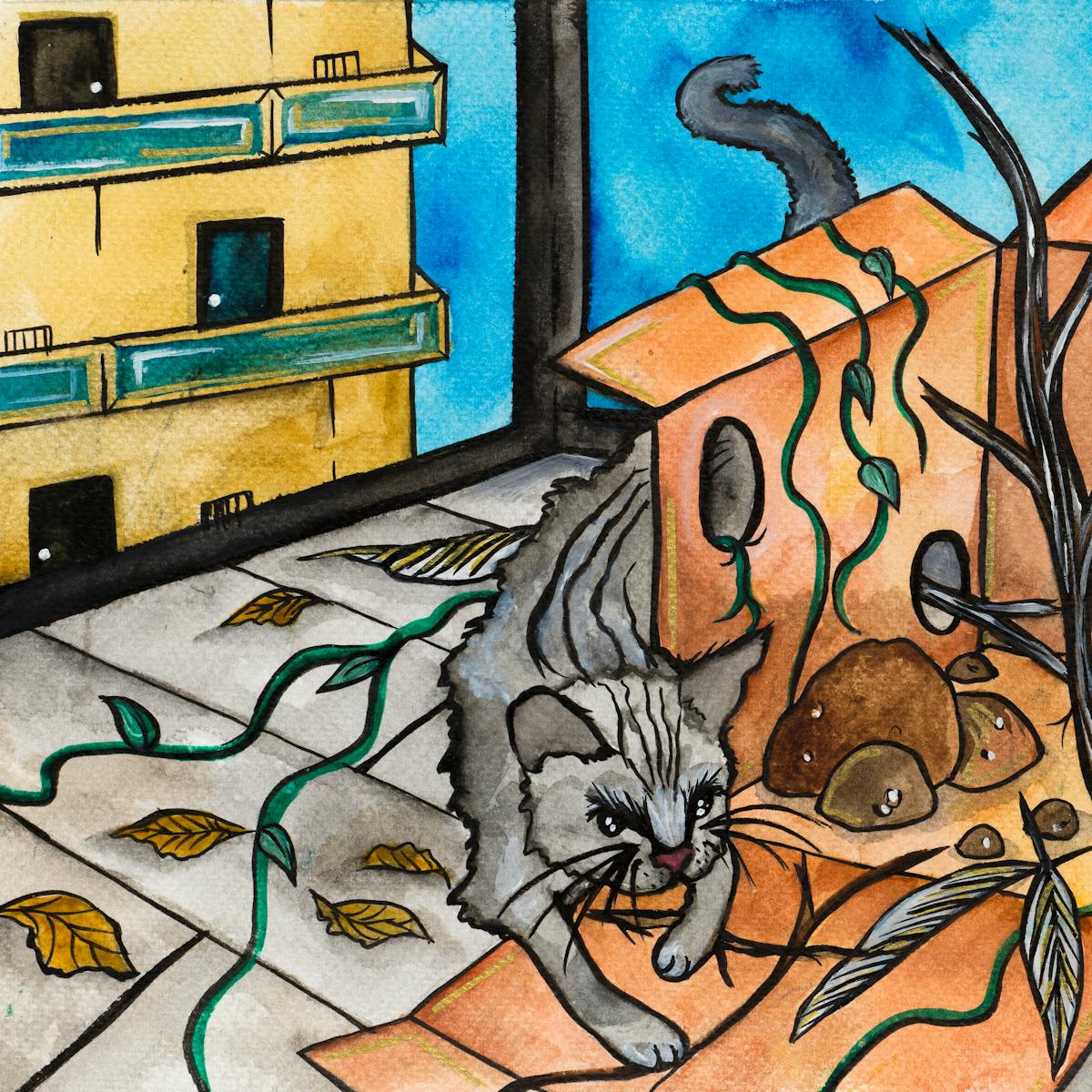When Abi Palmer decided to get two kittens, she knew that they would have to be indoor cats. But regularly bringing her nature finds back home and building mini-forests with changing seasons created a meditative focus for her and stimulation for the cats, which they all explored in different ways.
The Covid-19 pandemic has left me reeling. I’ve been untethered, desperate for something to cling to. On learning that the virus lingers in the air, on my hands, in our hugs and handshakes, the thing I longed most for was touch itself. I found myself craving a connection to nature: a sensory reminder to pull myself out of my human anxiety. I wanted so much to be allowed to hold something alive and new.
And so, in the intermission between lockdowns, I climbed into my car with my partner and we drove to Essex to meet a man from Gumtree about a pair of so-called Siberian forest kittens.
We live on the third floor of a south London housing block, in a newly built wheelchair-accessible flat. Reaching the outside world would require my cats to move through multiple secured entrance points, whereupon they would immediately encounter a main road.
Having spent countless nights scrolling online, I found many convincing reasons to keep a cat indoors. By choosing a pair of siblings, we hoped they would continue to learn the feline behaviour they would have met in the outside world.
Initially, my happiness at getting to meet our new family outweighed any doubts I had. But as my kittens grew, I found myself revisiting the ethics of my decision. Cats are so wild. I watched my miniature tigers prowling the apartment, looking for routes to climb as high as possible, or lurking amid laundry as if deep in the jungle. I wondered more and more whether they might prefer the dignity of roaming freely, in spite of the increased risk to their own lives.

“In the intermission between lockdowns, I climbed into my car with my partner and we drove to Essex to meet a man from Gumtree about a pair of so-called Siberian forest kittens.”
Bringing the outdoors indoors
In the absence of being able to bring them to nature, I decided to bring nature to them. We began foraging in Greenwich Park, gathering as much as we could carry: leaves and sticks, a handful of feathers, conkers, a fallen tree branch. The best find was an abandoned log with flaking bark and mulchy soft bits. It had that dense, earthy smell that I always want to lie down in, the scent of a cushiony forest floor.
We presented our findings to the kittens. I emptied my mobility-scooter basket into a cardboard box, and they took turns climbing into it. To complete our makeshift jungle, I put on a Spotify playlist called ‘Sounds of the Forest’.
Watching the cats become immersed in this wonderland was incredible – like rediscovering nature for the first time. I was reminded of being eight years old and hiding inside a holly bush. A natural cave had formed – and I felt absolute awe at becoming lost inside it.
Cha-u-Kao (the tabby cat) sat in her dark forest box, almost completely still, for long witchy hours, absorbed in the fantasy. Lola-Lola (in a black-and-white tuxedo) quivered with excitement at each new discovery – crunching through leaves, chasing branches and conkers across the floor.
The gesture of presenting my findings through entirely non-verbal means gained a ritualistic significance of its own. I began to expand my forages, focusing on a growing range of smells and textures: pine, oak, maple, mint, sage and moss. As the weather changed, I tried to reflect the seasons: gathering a mushroom, some rained-upon leaves, even an icicle, all piled into the front basket of my mobility scooter.
The search gave my trips purpose, a reason to go outside. My engagement with the natural world expanded as I attempted to transform the cats’ inner space.

“In the absence of being able to bring them to nature, I decided to bring nature to them.”
Their forest boxes became elaborate sculptures. I tried to capture the essence of ‘forest’ through hanging leaves and carving holes to mimic the sense of sunlight moving through branches. In the same way that every forest I’ve been to feels unique, I wanted each box to feel like a different world.
There is a ceremony in how the cats and I explore our findings. Both kittens are obsessed with water. I fill a copper bowl to form a temporary lake. They both come running and the performance begins. We sit together – each cat enthralled, waiting their turn to inhale the aroma of a new branch. They seem to enjoy investigating the elements. I swirl each stick through our makeshift lake before offering it for a second smell.
I feel it is important that the cats understand the context of my offerings: the world outside their door. So I have begun to perform the changing weather for them: dripping a wet stick from above so they can chase the raindrops; orchestrating a cascade of falling leaves; dropping an ice cube into water for them to paw and puzzle over.
In the coldest winter, when I couldn’t get outside, I took old sticks and built new sniffing posts: twigs placed in vases of water, which slowly dampened and decomposed. Each time we revisited them, the sticks had transformed, to the delight of my mesmerised creatures.

“Their forest boxes became elaborate sculptures. I tried to capture the essence of ‘forest’ through hanging leaves and carving holes to mimic the sense of sunlight moving through branches.”
Shrines of reverence and grief
My grief in my body changes with the seasons: winter is cold and my knees become swollen. In spring, the pollen causes a violent flare in my toes, leaving me hospitalised. I have spent so much of my life longing for nature, yet find it full of threat.
Seeing their joy in these miniature reproductions of the great outdoors has shifted something in me: an understanding of what I’ve done. Trapped in my apartment and unable to spend enough time outdoors, I took in two small creatures who represent the outside world – my kittens, sitting in their own small boxes, overjoyed to connect with their even smaller fragments of the outside world. A box within a box, stacked, as we are, in a city full of boxes.
In some ways there’s beauty in this. But more than that, there’s pain: the idea that creatures – human and feline – are not designed to live like this.
I am not alone when I say that this year has altered how I feel about survival. The end of the world as we know it feels palpable, hanging in the air with the virus. The climate crisis is approaching breaking point. At the same time, the division between humans is also growing. Society forces its most vulnerable into crowded and inhumane conditions via property developers who are happy to sacrifice green spaces for unaffordable housing and unsustainable lifestyles.
Performing the outside world for my kittens has allowed me space to process my many griefs. In building these forest boxes, I’m creating shrines to nature: processing my complex feelings of grief and reverence for the forests I love, mourning for them, and fearing their decline is irreversible. I like to watch the cats lose themselves completely for as long as they can in the illusion. At the same time, it makes sense that the boxes are inescapably small.
I hope one day to be able to live in a home where my cats can explore the world more freely. But for now, we are here together, performing our unspoken rituals: our shared reverence for this vast, unexplainable universe.
About the contributors
Abi Palmer
Abi Palmer is an artist and writer. She uses film, text, sculpture and sensory intervention to explore sick bodies, viscous textures and ecological landscapes. Artworks include mixed-media solo exhibition ‘Slime Mother’, film series ‘Abi Palmer Invents the Weather’ and interactive gambling arcade ‘Crip Casino’. Text works include the books ‘Slugs: a Manifesto’ and ‘Sanatorium’.
Maïa Walcott
Maïa is a Social Anthropology undergraduate at the University of Edinburgh and a multidisciplinary artist working with sculpture, painting, illustration and photography. Her work has been widely published and exhibited, appearing in the anthology ‘The Colour of Madness’ and as part of ‘Project Myopia’. Maïa was also the in-house illustrator for the literary magazine The Selkie, and photographer for photo exhibitions such as ‘The I'm Tired Project’ and ‘Celestial Bodies’.


